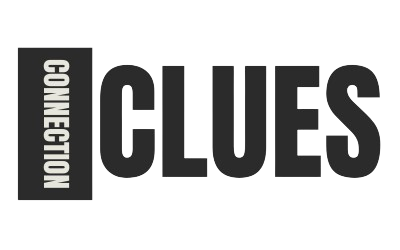Setting clear and realistic developmental goals is the foundation of continuous growth—both personally and professionally. Whether you’re a student, employee, manager, or entrepreneur, having a set of well-defined goals helps sharpen your skills, track progress, and achieve long-term success.
In this guide, we’ll explore what developmental goals examples are, how to set them using the SMART goal framework, and provide real-life examples for work, education, and personal development.
What Are Developmental Goals?
Developmental goals are targets you set to improve your abilities, performance, mindset, or knowledge. Unlike performance goals, which focus on outcomes (e.g., sales numbers or project delivery), developmental goals emphasize learning, growth, and skill-building.
They help you:
- Enhance personal or professional capabilities
- Improve weaknesses
- Build on strengths
- Stay motivated and accountable
How to Set Effective Developmental Goals: The SMART Method
A proven way to set clear and actionable developmental goals is by using the SMART goal framework:
| SMART Component | Description | Example |
| Specific | Clear and well-defined | “Improve my public speaking skills” |
| Measurable | Quantifiable or trackable | “Attend 3 workshops and give 2 speeches” |
| Achievable | Realistic within your capacity | “Within the next 3 months” |
| Relevant | Aligned with your growth or job role | “Important for my leadership role” |
| Time-Bound | Has a deadline or timeframe | “By December 15, 2025” |
Top Developmental Goals Examples by Category
Personal Development Goals Examples
- Improve Emotional Intelligence (EQ)
SMART Goal: Take an online EQ course and practice active listening weekly for 3 months. - Increase Self-Discipline
SMART Goal: Wake up at 6:30 AM daily and maintain a task list for 30 days. - Build a Healthy Routine
SMART Goal: Exercise 4 times per week and reduce screen time after 9 PM for 60 days. - Enhance Critical Thinking Skills
SMART Goal: Read 2 problem-solving or philosophy books per month for 6 months.
Professional Development Goals Examples
- Improve Communication Skills
SMART Goal: Join Toastmasters and give 3 public speeches by Q4. - Learn a New Software or Tool
SMART Goal: Complete an Excel for Business course on LinkedIn Learning within 4 weeks. - Develop Leadership Abilities
SMART Goal: Lead a cross-functional team project by the end of Q3. - Time Management Improvement
SMART Goal: Use time-tracking software daily and reduce wasted time by 25% in 2 months. - Expand Industry Knowledge
SMART Goal: Attend 2 conferences and complete 3 certifications this year.
Academic/Student Developmental Goals Examples
- Boost GPA or Academic Performance
SMART Goal: Study 2 hours daily and aim for a 3.5 GPA this semester. - Improve Public Speaking
SMART Goal: Join a debate club and participate in 2 events before year-end. - Enhance Research Skills
SMART Goal: Complete 3 independent research projects this academic year. - Develop Study Habits
SMART Goal: Create and follow a weekly study plan for the full semester.
Leadership Development Goals Examples
- Coach and Mentor Others
SMART Goal: Mentor 2 junior employees over the next 6 months. - Improve Conflict Resolution
SMART Goal: Take a conflict management course and apply techniques in team meetings. - Delegate Effectively
SMART Goal: Delegate at least 30% of non-core tasks to team members by next quarter. - Increase Team Engagement
SMART Goal: Conduct monthly one-on-ones and quarterly surveys to improve engagement scores.
Why Developmental Goals Matter
Setting and pursuing developmental goals leads to:
- Stronger performance at work or school
Increased confidence and self-awareness
Better adaptability in changing environments
Enhanced interpersonal relationships
More opportunities for promotion or growth
How to Track Your Developmental Goals
- Use a Goal Tracker App (e.g., Notion, Trello, Asana)
- Review Weekly or Monthly
- Reflect on Challenges and Wins
- Adjust Goals as Needed
- Celebrate Milestones
Mistakes to Avoid When Setting Developmental Goals
- Setting vague or broad goals
Focusing only on outcomes, not growth
Ignoring time constraints or real-life limitations
Not reviewing or tracking progress
Giving up after minor setbacks
Conclusion
Whether you’re a student striving to ace exams or a professional aiming for the next promotion, setting clear and actionable developmental goals is a game changer. By using the SMART framework and following proven examples, you can unlock your potential, build confidence, and consistently move forward in your personal and professional life.
Start with just one goal today—and build from there.
FAQs
1. What’s the difference between developmental and performance goals?
Developmental goals focus on skill-building and learning, while performance goals focus on outcomes like sales or deadlines.
2. How many developmental goals should I set?
Start with 2–3 focused goals to avoid overwhelm and track progress effectively.
3. How often should I review my goals?
Review your goals weekly or monthly, depending on urgency and complexity.
4. Can developmental goals be shared with my manager?
Absolutely. In fact, sharing them shows initiative and invites mentorship or support.
5. What tools help with tracking developmental goals?
Try tools like Notion, Trello, Google Sheets, or journaling apps to set milestones and reflect on progress.
Also read: PE Firms Financing CDO: Strategies, Structure & Market Impact









